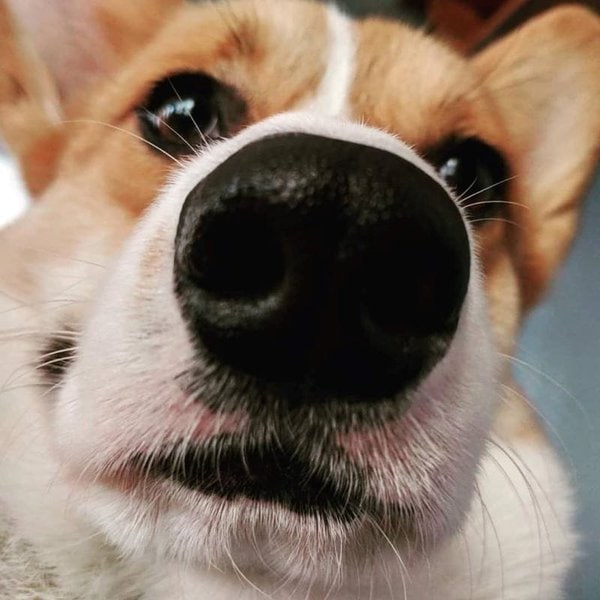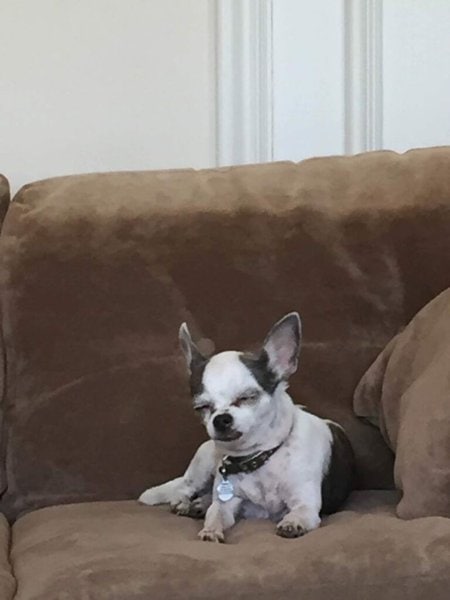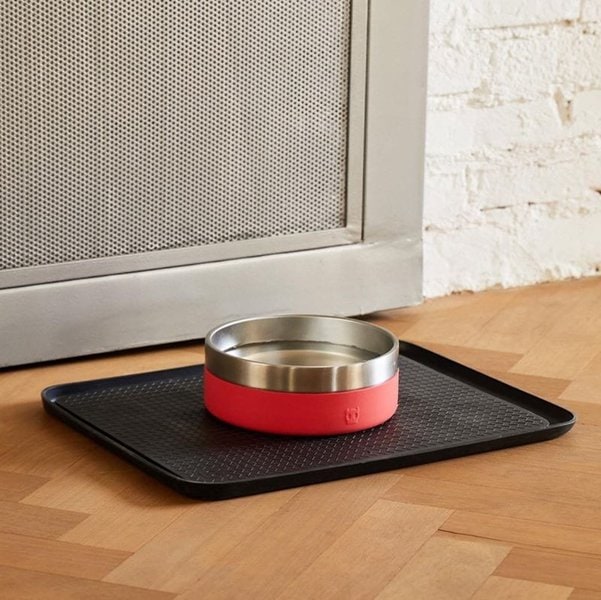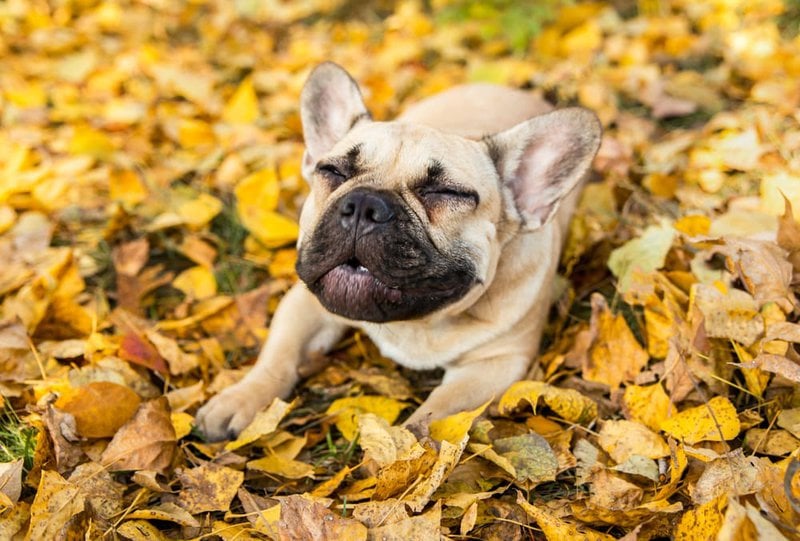Why do dogs reverse sneeze? That’s what we’ll look at here today. We’ll see what causes it and whether it’s something you should be worried about.
Reverse sneezing in dogs is usually caused by an irritant getting into their nose or throat. Their reaction is to then pull it into their throat and swallow it. In most circumstances, this is not something to be worried about but it can be caused by an allergy or an underlying issue.
If you see other symptoms, like breathing difficulties, then you should take action. While that’s a quick overview, there’s a lot more you need to know about reverse sneezing. In this article, we’ll go over exactly why your dog is reverse sneezing, when you should be worried and what you can do to stop it. By the time you get to the end, you’ll know everything there is to know about reverse sneezing.
Why Is My Dog Reverse Sneezing?
Reverse sneezing in dogs is usually caused by irritation in their nose, throat, or sinuses. It can occur anytime they pull in an irritant through their nostrils while sniffing, licking, or swallowing something.
Essentially, any small particle or offending smell can trigger the dog’s natural reaction to eliminate the irritant by pulling in air and producing more nasal secretion. Dogs with longer noses have narrower nasal passages and therefore are more often affected by this condition.
What Is Reverse Sneezing A Sign Of?
This condition is generally a result of a momentary irritation caused by small particles such as pollen, grass, seeds, nasal mites, or foreign odors. Sometimes even the dog’s own nasal discharge can bother them if it’s overproduced.
If it happens occasionally, it usually passes quite quickly and without any consequences. However, if it occurs frequently, reverse sneezing may also be a sign of severe allergies, an elongated or deformed soft palate, or any other underlying conditions affecting the dog’s nasal passages or throat.

Can Stress Cause Reverse Sneezing In Dogs?
If the dog gets anxious or suddenly starts expressing aggressive behavior, all its muscles become tense. This includes the muscles in their soft palate as well, which becomes more narrow. As stressful events like these also cause more nasal secretion, the dogs will have trouble eliminating through the already narrowed passage.
The buildup of the excretion often ends up triggering an episode of reverse sneezing. It can also occur if a dog gets stressed due to exercise intolerance or when its collar is too tight or pulled too hard.
Can Excitement Cause Reverse Sneezing In Dogs?
Similar to a stressful event, a happy one can also lead to sudden onset reverse sneezing. If your dog gets over excited, this causes a similar physical condition, causing irritation in their nose or the back of their throat.
As it forces them to stand still until they expel the irritant, this state will also help them calm down much sooner. This way, they can enjoy playtime or whatever joyful event that caused their excitement.
Why Is My Dog Reverse Sneezing More Than Usual?
If your dog begins to display this condition more frequently, it can signify an underlying condition. In most cases, these are only allergies or minor upper respiratory infections. However, frequent episodes can sometimes be triggered by a contagious illness or a more serious condition.
Should I Be Worried About Reverse Sneezing?
Even though it can be alarming to witness your dog reverse sneezing, this usually isn’t something to be concerned about. Dogs can expel the occasional offending particle or object from their noses or throat efficiently and without interventions.
Apart from helping them clean their throat and nasal passages naturally, reverse sneezing can also have a very beneficial calming effect on your dog. As long as it only happens on rare occasions, you won’t have to take any action to prevent or relieve the symptoms.

When Should I Worry About Reverse Sneezing In Dogs?
If your dog suddenly begins reverse sneezing a lot more frequently than it did before, this can indicate a more severe illness. In this case, it’s recommended to investigate the condition of your pet further.
If the reverse sneezing is also accompanied by other unusual symptoms, such as runny, stuffy, or dry nose, itching, breathing difficulties, lethargy, and loss of appetite, it’s definitely recommended to take immediate action to help your pet.
Can A Dog Die From Reverse Sneezing?
The only way for a dog to die during reverse sneezing, if its airflow gets completely obstructed, leading to suffocation. This means that unless your dog has a congenital nasal defect or is suffering from a condition like asthma that causes airflow obstruction, it’s unlikely to die from reverse sneezing alone.
Fortunately, dogs have a natural reaction to take shallow, frequent breaths while expelling an irritant. Due to this, even smaller dogs with overly large soft palates that are usually more affected by reverse sneezing can manage to breathe through an episode.
Does Reverse Sneezing Hurt Dogs?
During the occasional reverse sneeze, their soft palate constricts, and this can make your dog feel uncomfortable. Fortunately, your pet won’t feel any pain, and even the little discomfort they experience will pass when they resume their regular breathing pattern.
However, prolonged exposure to these episodes may damage the soft tissue of their nasal passage, which can make it painful for a dog to swallow or even breathe regularly. Some respiratory infections or tumors can also cause pain while reverse sneezing occurs and even after it has already passed.
When Should I Take My Dog To The Vet For Reverse Sneezing?
It’s recommended to take your dog to the vet as soon as possible if you notice your pet has difficulty breathing during or after a reverse sneezing episode.
It’s also a good idea to consult a veterinarian if the attacks become too frequent or the dog develops other symptoms as well.
Even if it’s a case of minor allergies, the vet can still advise you on how to spare your dog from being exposed to the allergens and relieve its symptoms. When it comes to certain infections, an early visit to the vet can also prevent your dog from developing a potentially life-threatening condition.

How Much Is Too Much Reverse Sneezing?
Fortunately, reverse sneezing caused by minor particles and odors or heightened anxiety levels usually stops right after the irritant is expelled or the dog calms down.
An individual episode of reverse sneezing usually lasts for a couple of seconds or minutes at the most. It rarely lasts for longer than 5 minutes; however, a dog can have repeat episodes during a couple of hours if the irritation persists.
In case of some more serious underlying conditions, such as infections or asthma, the attacks may not stop repeating themselves for days or until the cause is treated.
Even if your dog doesn’t reverse sneeze for a couple of days after a large number of episodes, you should still keep an eye on it. And if the attacks begin anew, you should take your dog to the vet as soon as possible to rule out any serious condition.
Why Is My Dog Reverse Sneezing So Much?
Reverse sneezing can have many different causes, and the exact reason for your dog’s episodes can only be uncovered and established by a veterinarian.
It may be a simple case of allergies, especially if you have introduced some new chemicals to the household or moved to an entirely new environment.
In the latter case, your pet can be dealing with a lot of anxiety and stress, which may lead to an increasing number of reverse sneezing episodes.
Infections may also cause frequent reverse sneezing, particularly in dogs with narrow nasal passages and soft palates.
Similarly, nasal mites and certain tumors affecting the upper respiratory tract can also lead to these symptoms.
How Do I Get My Dog To Stop Reverse Sneezing?
In most cases, your dog will stop reverse sneezing by themselves. If they don’t, you can try to massage their neck and head, as long as your pet feels comfortable with it.
Throat irritation can be relieved by water, drinking it will wash away the irritants and help clear their throat from the excess secretion buildup.

If the episode is caused by stress or excitement, calming the dog with a massage or talking to them in a calmer tone should help relieve the symptoms. As the dog begins to breathe in and out in a regular pattern, the sneezing usually stops on its own, and your dog will be fine.
Reverse sneezing caused by allergies can be prevented or relieved if you stop exposing your dog to the offending particles or removing the right allergic triggers.
Depending on the type of allergies your pet has, this may include changing the chemical you use around the home, their shampoo, or even food. Irritation provoked by infections, nasal mites, and other underlying conditions will only cease to exist if the cause is treated.
This often requires specific medical treatment prescribed by a veterinarian. In addition, if the irritation is caused by a larger foreign object lodged in the throat of your pet, you will probably need help removing it safely.
Will Benadryl Help Reverse Sneezing In Dogs?
If your dog is allergic to pollen or dust, you may not be able to prevent exposing them to the allergens. In this case, you can give your pet small doses of Benadryl or similar antihistamines to help relieve their symptoms.
It’s recommended to consult your vet first to see if they agree on this type of medication for your dog. They will also help determine the exact dosage your dog needs according to their body weight. Plus, a vet can advise you on what other solutions you can apply to alleviate your dog’s condition.
For example, using a vaporizer or humidifier in your home will make the inside air less dry, while an efficient AC unit can help to keep air pollutants away from the inside of your home.
You can also avoid walking your dog in the morning as the pollen count is usually the highest at this time of the day.





